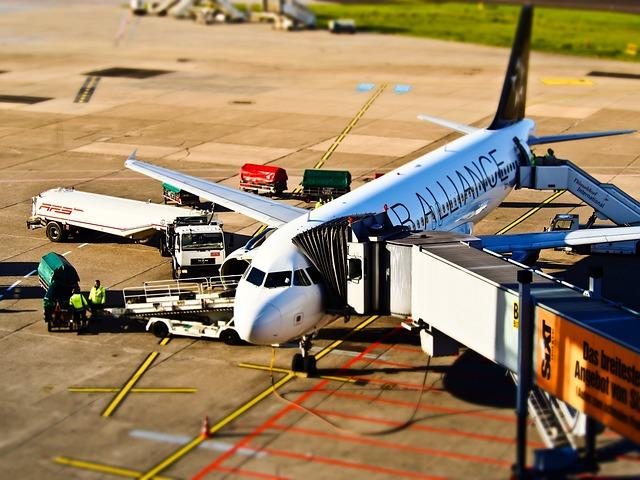In the skies above, a quiet revolution has unfolded, transforming the way we explore our planet. Low-cost airlines, once a novel concept, have become the jet engines propelling millions toward destinations previously deemed out of reach. They promise adventure at a fraction of the price, offering tickets that often cost less than a night’s stay at a budget hotel. Yet, as the world becomes more interconnected and accessible, a new challenge has emerged on the horizon—overtourism. The quaint streets of once-sleepy towns now bustle with a constant stream of visitors, while iconic landmarks grapple with the weight of endless footfalls. This article delves into the intricate role low-cost airlines play in this phenomenon, exploring how they have not only democratized travel but also contributed to the burgeoning pressures faced by popular destinations around the globe.
Expanding Horizons or Crowding Destinations
As travelers are enticed by the allure of budget-friendly airfare, destinations that were once considered remote or exclusive have become accessible to the masses. This democratization of travel, while laudable, has led to a phenomenon where these once-pristine locales now struggle under the weight of increased footfall. The boom in tourism can often lead to a paradox: instead of expanding one’s horizons, tourists find themselves amidst crowded landmarks and bustling streets. Low-cost airlines, with their aggressive pricing strategies, play a pivotal role in this transformation.
Key factors contributing to overtourism include:
- Increased Flight Frequencies: More flights mean more tourists, sometimes beyond the capacity of local infrastructure.
- Accessible Pricing: Budget airlines make it feasible for travelers from all walks of life to explore distant destinations.
- Destination Marketing: The promise of an affordable exotic getaway can create an influx that local ecosystems aren’t equipped to handle.
- Off-Peak Travel: With low-cost options, even off-peak seasons see an uptick in tourist numbers, offering little respite to popular spots.
While low-cost airlines have undeniably made global travel more inclusive, they also challenge us to find a balance between wanderlust and sustainability. As we navigate this complex landscape, it becomes essential to ponder whether we are truly expanding our horizons or simply crowding our destinations.

The Economic and Environmental Impact of Budget Flights
Low-cost airlines have revolutionized travel by making air transportation more accessible than ever before. However, their economic and environmental footprints are subjects of growing concern. On the economic front, budget flights have democratized travel, allowing a broader demographic to explore international destinations. This has led to an increase in tourist spending in cities and regions that were once off the beaten path. Yet, the influx of visitors often strains local resources and infrastructure, leading to increased costs for maintenance and development. Small towns and cities, unprepared for the sudden surge in tourism, may face skyrocketing property prices and a cost of living that threatens local communities.
From an environmental perspective, the rise of budget airlines has significantly contributed to carbon emissions and environmental degradation. The affordability of these flights encourages frequent travel, which translates to a higher carbon footprint per traveler. The impact on local ecosystems can be devastating, with popular destinations suffering from pollution, waste management issues, and habitat destruction. Moreover, the environmental costs are often not reflected in the ticket prices, leading to a disconnect between consumer behavior and ecological responsibility. As low-cost airlines continue to thrive, the need for sustainable travel solutions becomes ever more pressing, urging policymakers and travelers alike to consider the long-term impacts of their choices.

Balancing Accessibility and Preservation in Popular Tourist Spots
The increasing availability of low-cost airlines has significantly altered the tourism landscape, making once remote destinations accessible to millions. However, this democratization of travel has brought with it a pressing challenge: how to manage the influx of visitors without compromising the cultural and natural integrity of popular tourist spots. Accessibility and preservation must be balanced to ensure that these destinations remain vibrant and sustainable for future generations.
To address these challenges, several strategies can be considered:
- Implementing visitor quotas: By limiting the number of tourists allowed in certain areas at any given time, destinations can reduce the strain on local resources and infrastructure.
- Promoting off-peak travel: Encouraging tourists to visit during less busy times can help distribute visitor numbers more evenly throughout the year.
- Investing in sustainable infrastructure: Developing eco-friendly facilities and transportation options can minimize environmental impact while enhancing visitor experiences.
- Engaging local communities: Involving residents in tourism planning ensures that their needs and concerns are prioritized, fostering a sense of ownership and stewardship.
By adopting these measures, popular tourist spots can continue to thrive as accessible destinations while preserving their unique allure and heritage.

Strategies for Sustainable Tourism in the Age of Affordable Travel
As low-cost airlines democratize travel, they simultaneously amplify the challenges of overtourism. With budget-friendly flights connecting previously remote locales to the global traveler, destinations are experiencing an unprecedented influx of visitors. This phenomenon, while economically beneficial, can strain local resources and infrastructure, disrupting community life and degrading environmental assets. The challenge lies in balancing the economic benefits with the sustainability of local environments and cultures.
- Implementing Visitor Caps: Cities like Venice and Dubrovnik have started experimenting with daily visitor limits to manage the flow of tourists.
- Promoting Off-Peak Travel: Encouraging tourists to visit during the shoulder seasons can help distribute visitor numbers more evenly throughout the year.
- Investing in Infrastructure: Upgrading public transportation and facilities can mitigate the pressure on local resources.
- Educating Travelers: Awareness campaigns can inform tourists about the impacts of overtourism and encourage responsible behavior.
By adopting these strategies, destinations can enjoy the economic benefits of increased tourism while preserving their unique cultural and environmental landscapes for future generations.
Wrapping Up
As we navigate the turbulent skies of global travel, the role of low-cost airlines in fueling overtourism emerges as a complex tapestry woven with threads of accessibility, economic growth, and environmental concern. These budget-friendly carriers have democratized the skies, inviting millions to explore the world with unprecedented ease. Yet, as picturesque destinations groan under the weight of their newfound popularity, the challenge of balancing accessibility with sustainability becomes ever more pressing.
In this unfolding narrative, the responsibility lies not just with the airlines, but with policymakers, communities, and travelers themselves. By fostering a collective awareness and encouraging responsible travel practices, we can ensure that the benefits of affordable air travel do not come at the expense of the very destinations we cherish. As the final boarding call echoes through the terminal, the journey towards sustainable tourism is one we must embark upon together, mindful of the impact each step leaves behind.

































